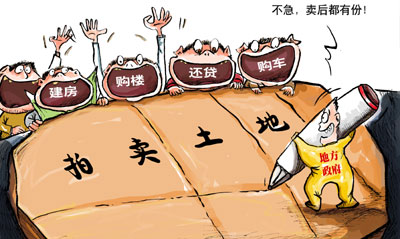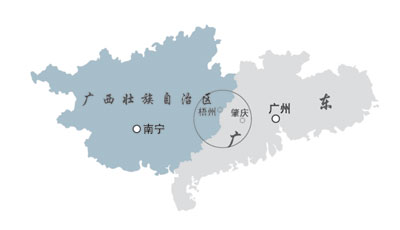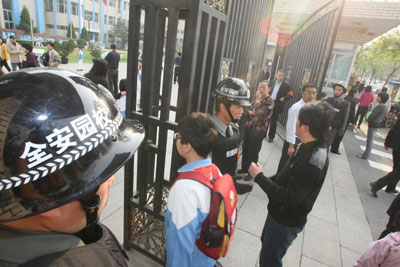

Highlights from the EO print edition, issue no. 468, May 10, 2010
Beijing Municipality Adopts Strict Policy to Curb Housing Price Surge
News, cover
~ On April 30, Beijing municipality issued a circular outlining 11 measures to implement the State Council's decision to curb the surge of housing prices. The circular requires commercial banks to stop offering mortgage loans to third home buyers and non-Beijingers who fail to prove they have paid taxes or social security funds in Beijing for at least one year. The circular also stipulates that from its date of issuance, local families can only buy one new house.
~ The EO learned that two main occurrences prompted the Beijing municipality to implement such strict policies. One was the headline assigning the title of "Land Kings" (companies that pay record prices for the rights to develop property in a certain area) to two Beijing centrally-owned enterprises in a newspaper published on March 15 this year, only one day after China's top legislature conference concluded.
~ A source familiar with the matter told the EO that when the headline was published, the State Council's Office ordered Beijing municipality and the State-owned Assets Supervision and Administration Commission to explain the matter.
~ The other occurrence is the climbing of the quoted housing price for some commercial residential buildings in Beijing's Tongzhou district to between 24,000 and 28,000 yuan per square meter. The quoted price even exceeds the housing price in suburban districts closer to the city center.
Original article: [Chinese]
Sinograin Set to Absorb Two State-owned Agricultural Enterprises
News, cover
~ According to a source within the State-owned Assets Supervision and Administration Commission (SASAC), Sinograin (China Grain Reserves Corporation), a centrally administered state-owned enterprise (COE) that's responsible for storing China's grain reserves, submitted a proposal to merge with two other COEs engaged in the grain and food storage industry to the State Council in March this year.
~ According to a source with the China National Association of Grain Sector (CNAGS), there is no doubt that the merger will be approved by the central government and that Sinograin will be able to swallow up the two other agricultural enterprises: Huafu Group (China Huafu Trade & Development Group Corp), the company that manages the country's sugar and meat reserves and the China National Cotton Reserves Corporation (CNCRC) at no cost.
~ The official announcement of whether the merger will go ahead is expected to be made in the second-half of this year.
~ If the merger is approved, Sinograin will expand so that it plays a greater role in processing and trading of grain, cooking oil, sugar, meat and cotton. It's said the name of the new company will be China Agricultural Products Reserves Group - 中国农产品储备集团 (Zhōngguó nóngchǎnpǐn chǔbèi jítuán).
~ Huafu Group, with six subsidiary companies, is not only responsible for managing China's sugar and meat reserves, but also processes, trades and researches sugar, meat, vegetable and wine.
Original article: [Chinese]
Despite New Policy Local Government Investment Projects Continue to Increase
News, page 4
~ The tightening of loan issuance and a stricter investment policy can't slow down the enthusiasm of local governments for investment.
~ Dozens of provinces set their GDP growth target at above 10 percent, which means each province needs to invest at least 1 trillion yuan in fixed-assets.
~ For instance, at the end of 2008 when China launched its 4-trillion yuan stimulus package, Hubei Province drew up 26,000 important projects to be constructed in the following two years. The investment scale of these projects will reach 8 trillion yuan. However, the province increased the number of important projects to be built to 37,600; the provincial government needs over 12 trillion yuan to finance them.
~ An official at the Hubei Development and Reform Commission told the EO that before 2012, the government plans to build 13,000 important projects, which need approximately 6 trillion yuan of funds. The provincial government estimates that it can secure 5 trillion yuan of funds, but still faces a funding gap of 1 trillion yuan.
~ The official said the provincial government would arrange 430 billion yuan of fiscal spending to support the above-mentioned projects. However, the province's fiscal revenue in 2009 only reached 152.3 billion yuan.
Original article: [Chinese]

Stricter Control on Loans to Local Financing Platforms
News, Page 5
~ The China Banking Regulatory Commission (CBRC) has ordered commercial banks to assess and review loans issued to local financing platforms, institutions established to help raise funds for the cash-strapped local governments amid the implementation of the country's 4 trillion yuan of stimulus package, the EO learned.
~ A source from a state-owned bank told the EO that commercial banks were ordered to submit their preliminary review reports to the CBRC in early May.
~ According to reports, outstanding loans issued to local financing platforms reached 7.38 trillion yuan by the end of 2009.
Original article:[Chinese]
Overcapacity In China's Higher Education Sector Calls for Reform
News, page 7
~ As Chinese students tend to enter universities which rank high among higher education institutions rather than those that best meet their interests and talents, experts believe that private universities, with a lower reputation and lower teaching quality, will be the first to suffer and may even go bankrupt.
~China's high ranking higher education institutions will face a severe increase of overcapacity, producing serious competition among universities in China.
~ The new competition will also force Chinese universities to raise their teaching quality to lure more talented students. Experts say, to make it possible for students of universities that go bankrupt to be accepted by other universities, it is necessary to lift the ban which prohibits Chinese students to freely transfer from one college to another.
Original article: [Chinese]

Different Paths to Success: Cities Caught Between the Gaps
Nation, page 9-11
~ This special feature examines the cities which due to their distance from their respective provincial capitals, have been left behind and thus need to find new avenues to achieve economic growth.
~ Examples include Pingxiang, a city in Jiangxi Province, which has formed a close economic tie with Changsha city, the capital of neighboring Hunan Province.
~ Chengzhou, a city in Hunan, has been able to attract a large amount of investment thanks to being located along the high-speed railway connecting Wuhan and Guangzhou.
~ Wuzhou, a city located in Guangxi Province, plans to tie itself into the economic zone of Pearl River Delta.
~ Ma'anshan, an city in Anhui, has become the provider of agricultural products to Nanjing, the capital of Jiangsu Province.
Original article: [Chinese]

School Safety
Nation, page 12
~ With several primary schools and kindergartens being attacked and dozens of children being seriously injured or killed, Chinese schools and the public have begun to sound the alarm on school safety.
~ Bodyguards are now being hired across the country to safeguard schoolyards and parents are lining up outside school gates to pick up their children.
~ While admitting the current measures imposed by schools and parents are important to deter potential attackers, more people are saying the government needs to provide a way to ease the social tensions created by the ever-increasing income gap between the rich and the poor and discrimination.
Original article: [Chinese]
Agricultural Bank of China Applies to List on Domestic Market
Market, page 17
~ A source from the China Securities Regulatory Commission told the EO, the Agricultural Bank of China has submitted an application to be listed on the market to the commission.
~ The EO learned the bank will still probably opt for a dual listing on both the Shanghai and Hong Kong markets. According to an underwriter, the bank will raise 70 billion yuan worth of funds from the A-share market and 120 billion Hong Kong Dollars from the H-share market.
Original article: [Chinese]

